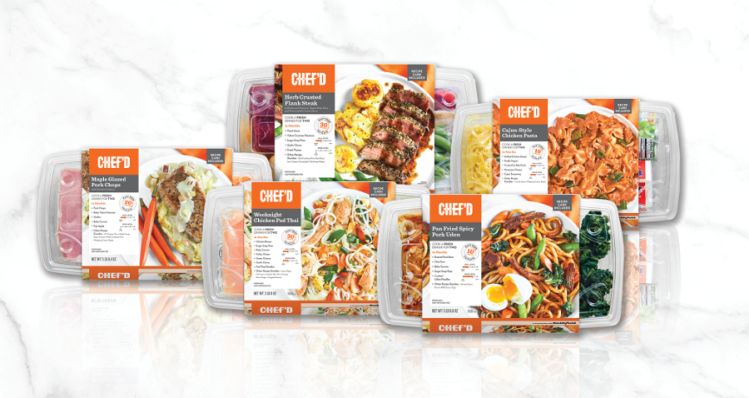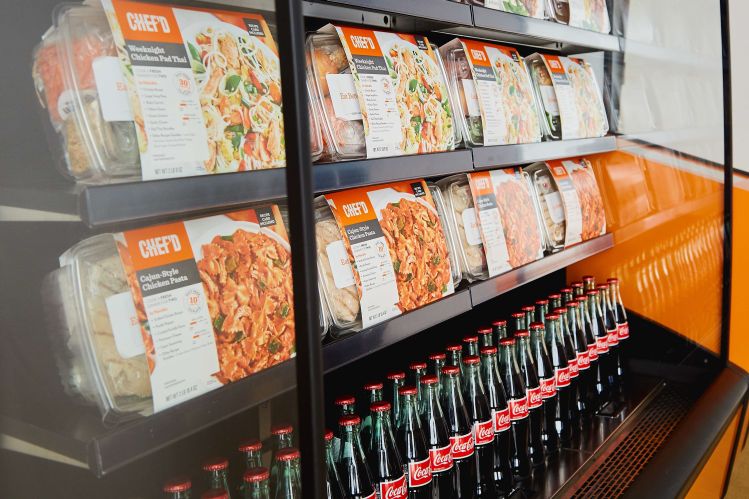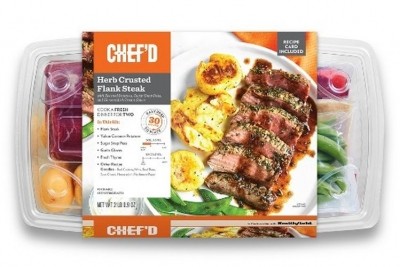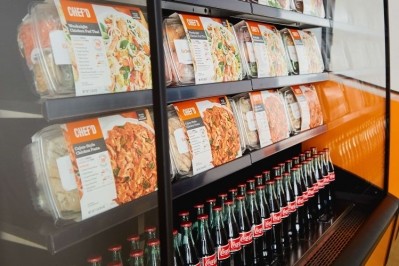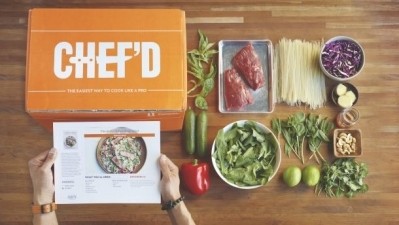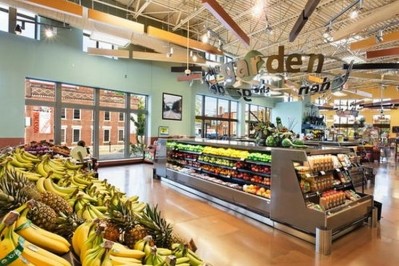‘The traditional direct to consumer subscription model reaches a limited consumer base’
The future of meal kits is omni-channel, says Chef’d, with meal kits to hit 1,500 stores by the end of May
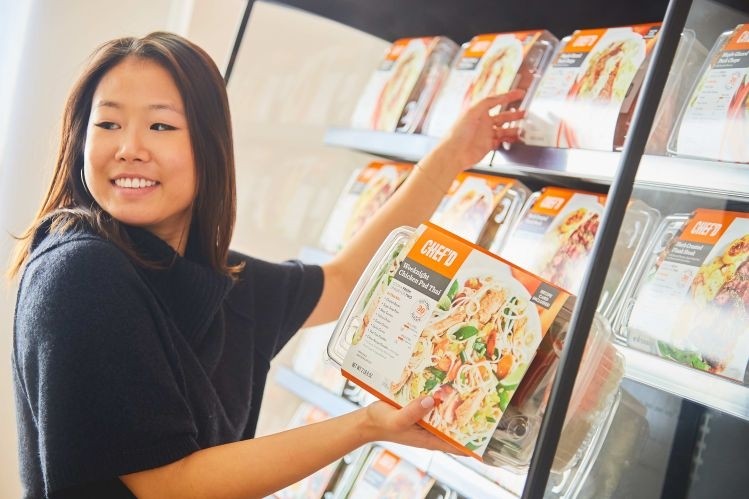
Speaking to FoodNavigator-USA as HelloFresh acquired meal kit brand Green Chef and Blue Apron confirmed plans to roll out instore recipe boxes later this year, Chef’d SVP retail Sean Butler said the company had recently opened a $10m production facility in Pico Rivera, California, specializing in producing meal kits for retail.
He added: “Meal kits instore are likely to become the top growing category in 2018 for all retail grocery. Over the next couple of months you're going to see some really large launches in big national retailers - hundreds or thousands of stores at a time."
Second generation packaging
While its initial foray into this market last summer with upmarket California-based retailer Gelson’s Market did not set the world on fire, things changed dramatically in November 2017 after Chef’d switched from cardboard boxes to clear plastic packaging that enabled shoppers to see what they were getting and doubled the shelf-life of the kits from 7-8 days from production to 16, said Butler.
“We had to sell through really quickly, so even though we had sales velocity we were still shrinking out back then at around 40%, which wasn’t sustainable for items retailing at up to $20.”
The second generation product uses a smart packaging system that modifies the atmosphere within each individually packaged component in the kit, based on an understanding of the respiration rates of the different ingredients, he explained.
“So we know that Brussels sprouts consume oxygen and emit carbon dioxide and ethylene at a different rate than carrots or green beans, so we pack them in needle or laser perforated bags or films [that are tailored to their individual respiration rates], and put them together to understand the net respiration rates within the compartments of the overall container.”
He added: “We are not flushing gas, so it’s a little different to traditional modified atmosphere packaging.”
Extended shelf life
With 16 days of shelf-life post production, the new kits – priced between $14.99 and $19.99 for a meal for two and now in around 300 stores from Hy-Vee and Costco to Gelson’s, Tops Friendly Markets and Food Lion - are proving significantly more appealing to retail partners, said Butler.
“We have three production facilities that reach more than 99% of the US continental population within two days of trucking from our facilities, which means retailers get 14 days of shelf-life, and it’s no longer one of the most perishable items that the store sells.
“So as a retail category manager, you can choose if you want to take a sell-out position or a shrink position and you can limit your shrink to zero if you say we’ll have a 40% chance we’ll be sold out two days a week or whatever, but you can manage it according to your goals. We also know that almost 90% of consumers buy and consume the kits the same day, or the day after.”
It’s important to make an impression quickly
As for merchandising, retailers have been experimenting with a variety of options, said Butler, who says Chef’d would ideally like to see the kits in chillers right at the front of the store, because if shoppers are wandering the aisles collecting ingredients for tonight’s meal before they spot the kits, they may have already got dinner covered.
“It’s important to make an impression quickly, because you don’t want to present the product at a point in the shopper journey where they have already filled their basket and made their meal planning decisions,” he added.
“At Tops, the products are merchandized at the entrance to the store in dedicated coolers with TV screens showing images of the meals being prepared in more than 80 locations. Other retailers are putting them by produce, some in the refrigerated meat section, some by the deli.”
The traditional direct to consumer subscription model reaches a limited consumer base
So who’s buying retail meal kits? And could they ultimately replace direct to consumer offerings?
It’s not about one or other other, but both, said Butler, who says Chef’d wants to have options for consumers wherever and whenever they want to shop.
Thanks to its partnership model (it partners with high-profile chefs and brands in food, fitness, and health & wellness that add ‘buy’ buttons to recipes on their sites), wide selection, and no subscription fees, Chef’d is already removing many of the barriers to online trial for consumers because it enables them to choose from hundreds of meals, without committing to anything.
However, some people still prefer to buy the kits in stores, said Butler, who is also developing a new same-day delivery option via a soon-to-be announced partnership in a number of markets with around 20 SKUs.
“According to Nielsen, only 9% of US households have tried a meal kit but we know that more than 70% of US households are aware of them. So the traditional direct to consumer subscription model reaches a limited consumer base.
“With retail kits you flip it to better value with no commitment, and you reach a broader audience, so we think that the addressable market for meal kits in this omni-channel environment is orders of magnitude greater than what it is with the traditional subscription model.”
We are the #1 performer in the retail meal kit category
But why would grocery stores deal with Chef’d at all when retailers – at least the larger ones – presumably have the wherewithal to develop and brand their own kits?
Lots of reasons, including that retailers are not necessarily better equipped than third party suppliers to create and supply meal kits at their own facilities or stores (although they could work with existing meal kit players to produce private label versions for retail), said Butler.
But also because data shows Chef’d is doing a better job than others in this market, he claimed: “IRI started tracking this category last year and Chef’d - by dollar velocity, by unit velocity, by total units and total dollars - is the #1 performing product in the category.”
In part, he said, this is because of Chef’d’s culinary credentials, but it’s also a reflection of the learnings it has extracted from crunching data from its direct to consumer business, trend reports from one of its CPG partners, and foodservice menu penetration data, so it can determine which meals are the most popular, where, and which ones to stock – even down to the store level.
